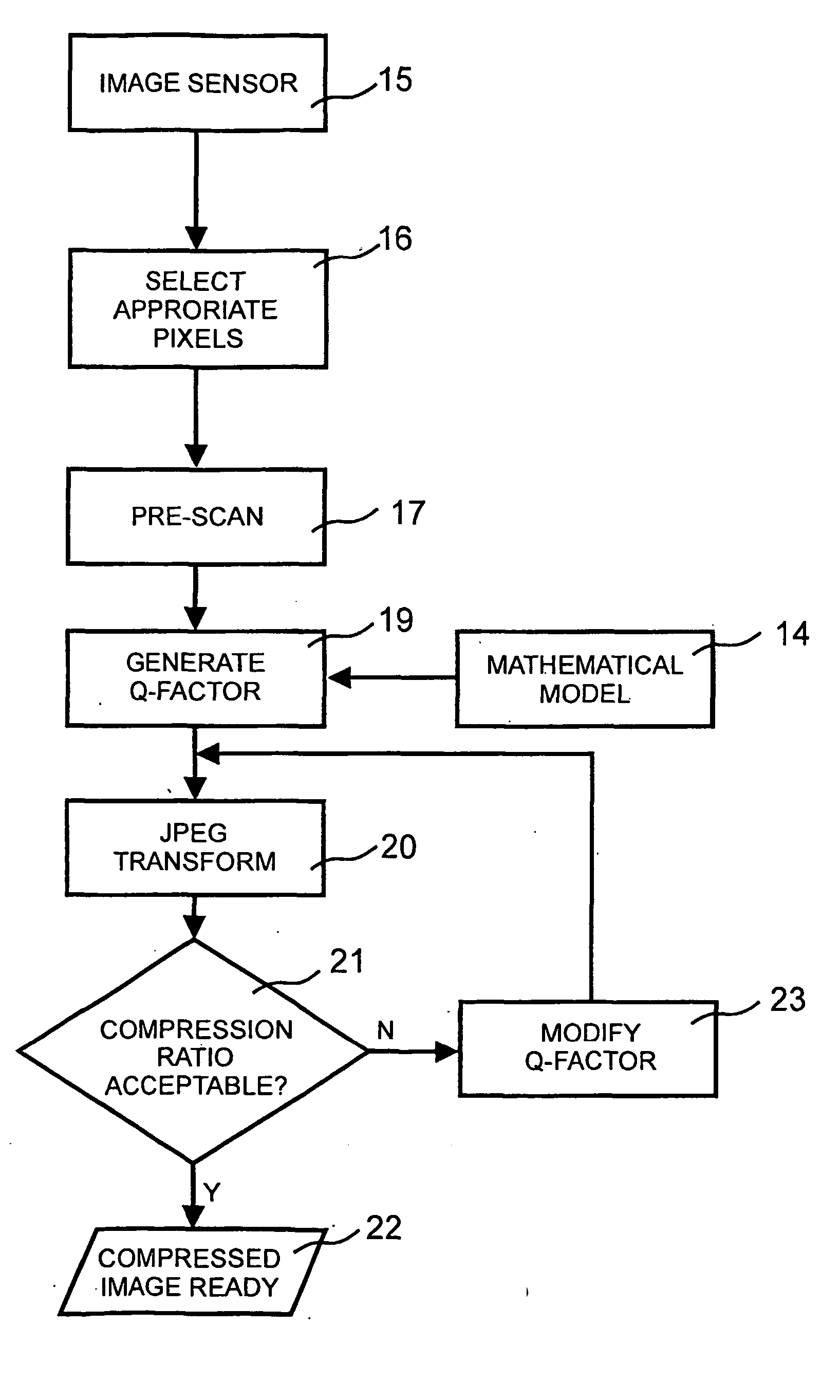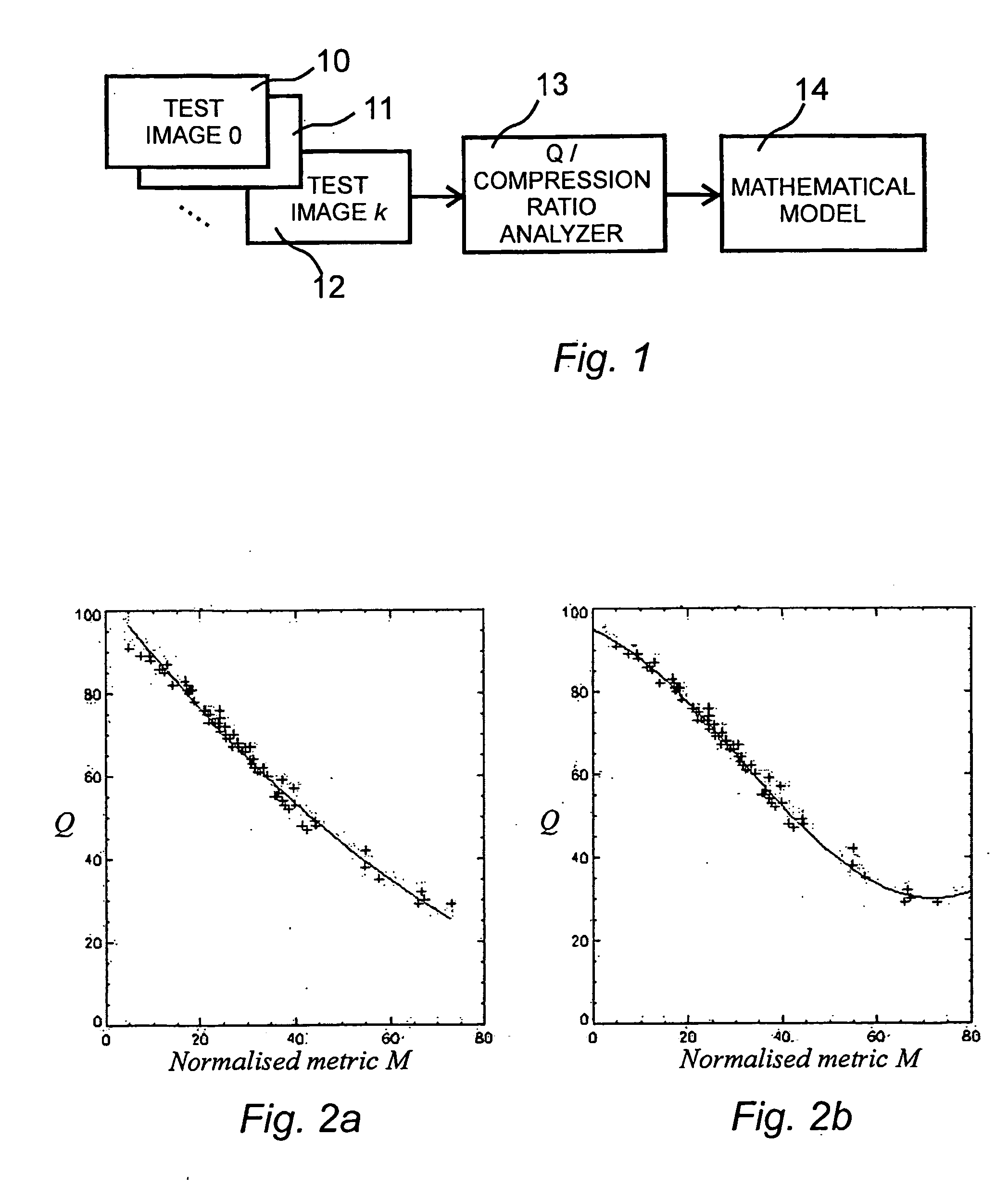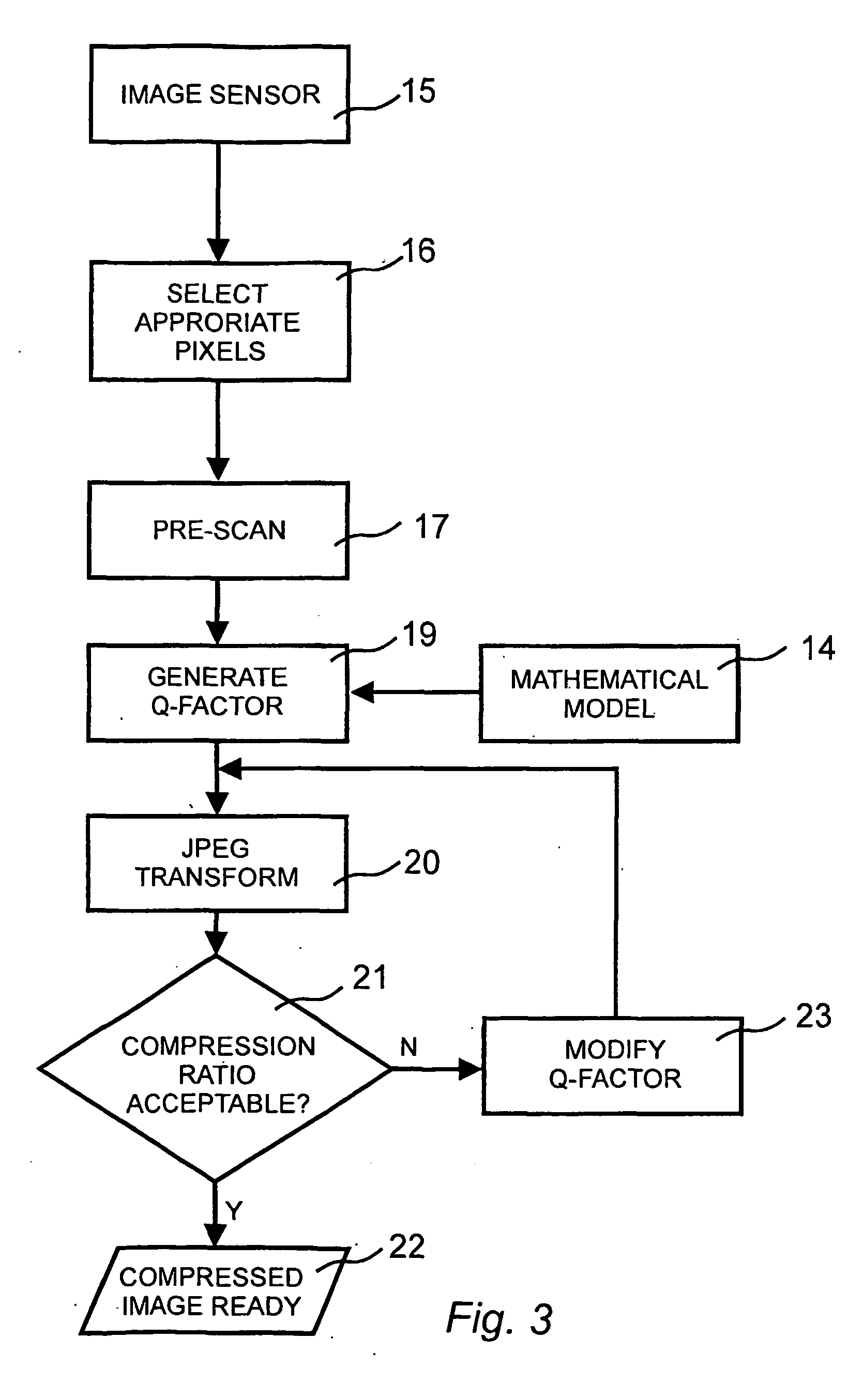Method for compressing digital images to a predetermined size by calculating an optimal quality factor
a technology of optimal quality factor and compression method, which is applied in image data processing, television systems, instruments, etc., can solve the problems of increasing the memory requirements of the required circuitry, requiring a substantial amount of extra processing time, and reducing the number of calculations needed, so as to reduce the memory requirement and increase the speed further. , the effect of reducing the number of calculations
- Summary
- Abstract
- Description
- Claims
- Application Information
AI Technical Summary
Benefits of technology
Problems solved by technology
Method used
Image
Examples
Embodiment Construction
FIG. 1 shows in a diagram suitable steps for establishing a mathematical model describing the relationship between a metric M of the image and a compression quality factor Q. When the method has been established it is possible to choose an appropriate quality factor Q after determining the metric M of the image chosen to be compressed. The relationship depends on the desired compression ratio, the size of the image (if no normalisation is used) and on the image source (the sensor and lens) that may have certain characteristics. Preferably a plurality of images should be used. In FIG. 1 test images 10, 11 and 12 are referred to as image 0 to image k. Each test image is sent to a Q / Compression ratio analyser 13. The Q / Compression ratio analyser 13 will produce a mathematical model 14.
The basis for establishing the mathematical model is a representative set of calibration digital images, acquired by a specific device, i.e. a sensor or a camera. The calibration images should not be com...
PUM
 Login to View More
Login to View More Abstract
Description
Claims
Application Information
 Login to View More
Login to View More - R&D
- Intellectual Property
- Life Sciences
- Materials
- Tech Scout
- Unparalleled Data Quality
- Higher Quality Content
- 60% Fewer Hallucinations
Browse by: Latest US Patents, China's latest patents, Technical Efficacy Thesaurus, Application Domain, Technology Topic, Popular Technical Reports.
© 2025 PatSnap. All rights reserved.Legal|Privacy policy|Modern Slavery Act Transparency Statement|Sitemap|About US| Contact US: help@patsnap.com



